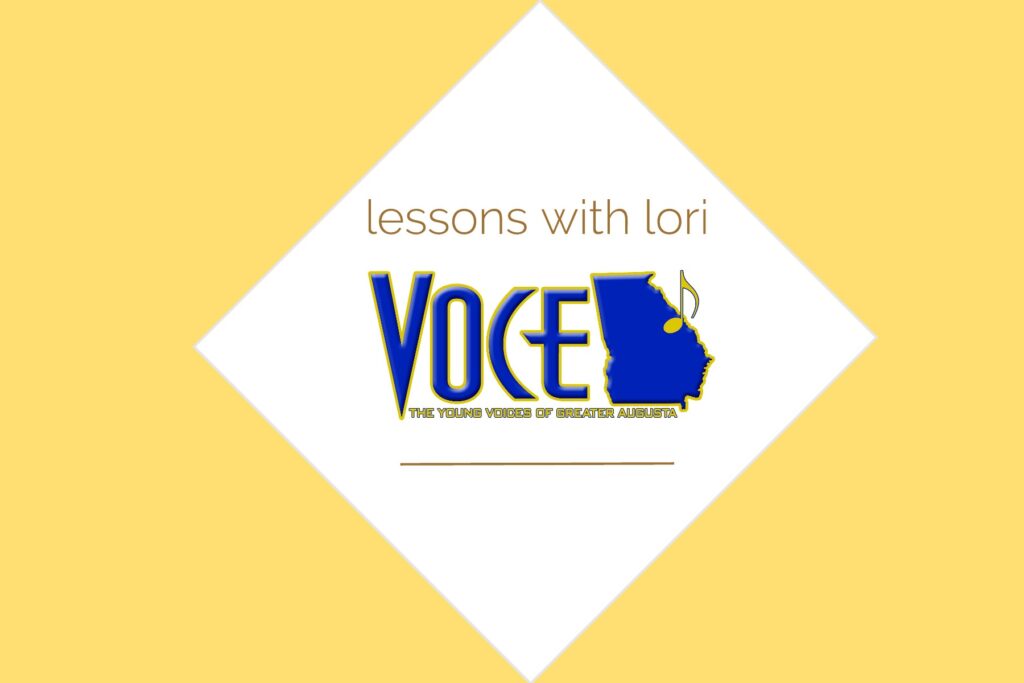Warm Up Wednesday
Hi there, and welcome to lessons with lori. Today I am going to teach you an exercise that I do every day myself, and is the first thing I do with my students in their lessons.
Everyone knows that singers need to warm up before a rehearsal or a performance, just like an athlete would stretch before a run, a practice, or a game. This is NOT one of those exercises.
Every morning when you wake up, your body has been still (well… still-ish for some of us) for the hours that you have been asleep. It is likely that the first thing you do when you get up is stretch. Some people have a specific stretching routine while others migh just reach their arms up or pop a stiff back. Your voice has also been at rest and deserves a nice little stretch first thing in the morning too.
You might not sing every day, (poor you) but you do speak every day. Phonation, (the process of utterance or sound) is the same for speaking as it is for singing, so why would you jump right in and start speaking without giving your voice a little morning stretch?
This exercise is a combination of a typical warm up and practices used in voice therapy. Voice therapy is perscribed to break bad habbits that are leading to vocal damage, as well as to retrain a voice after vocal damage. There are different types of therapies and practices, but vocal fatigue and overuse is something that plagues teachers and other public speakers as well as vocalists, and generally the first thing that the therapist will work to correct is the initial onset, or start, of the sound. A hard supraglottic onset (fancy term for aggressive use of muscles around the vocal folds) will slowly cause issues that will not quickly be reversed. Therapists will use “M” or “N” words to train the speaker to have a more gentle onset of sound.
As a voice teacher, I prefer using the “N” because it won’t allow my students to press their lips together (creating new tension) AND you don’t end up with an itchy tingle in your lips.

How to do the exercise
Breath in through your nose. On an “N”, with the tip of your tongue gently touching behind your upper front teeth, your lips parted and jaw relaxed, and your tongue relaxed on the bottome of your mouth, you will sing a glissando (fancy word for gliding up or down between two pitches) over a Perfect 5th. Start on a pitch that is comfortable for you. That means the first, easy, comfortable pitch that comes into your head is the one you should start on.
It is important that as you sing through the 5th, you hit every pitch on the way up and down. Think of it as a gentle stretching of a rubber band. I will frequently give my singers a rubber band to use during this exercise. If you struggle with the connectivity of the tone, doing this exercise while moving your hands as if you are stretching a rubber band will help with the focus, even if you don’t have a rubber band to use. As you use this stretch to gently wake up your voice, don’t try to go too high. Move up and down the scale by half step multiple times, maybe moving a little higher each time you move up the scale again.
The best part…
I love an exercise that gives me immediate feedback, letting me know if I am doing it right or not. If you find that there are gaps in the middle of your glissando, and you cant smoothly flow through all of the pitches, something isn’t right. You either have too much tension in your neck or throat, OR your breath isn’t supported and therfor isn’t connected to your tone. Make some adjustments to one or the other to fix the problem.
Tension and breath issues tend to creep in as you sing higher, especially if you aren’t comfortable in your upper register. Many singers get tense just thinking about singing a higher note. If you use this exercise in your vocal training, you can work to increase your range by paying attention to the feeling you have as you sing without tension. You want to replicate that feeling on those higher notes. I constantly hear “but that’s too high for me” when really the issue is that the singer doesn’t know HOW to access the higher notes, tenses up from worry, and in doing this, actively keeps their voice from accessing the notes.






